Astronomers have identified the nearest black hole to Earth–weighing an estimated 8,200 solar masses–using 20 years of Hubble telescope observations. It is in the heart of the globular star cluster Omega Centauri, located 17,700 light-years away.
Tag: Hubble Space Telescope
Astronomers find missing link in massive black hole formation
Newly identified fast-moving stars in the star cluster Omega Centauri provide solid evidence for a central black hole in the cluster. With at least 8,200 solar masses, that black hole is the best candidate for a class of black holes astronomers have long believed to exist: intermediate-mass black holes, formed in the early stages of galaxy evolution.
Pillars of Creation Star in New Visualization from NASA’s Hubble and Webb Telescope
Combining data from NASA’s Hubble and James Webb space telescopes, a team from NASA’s Universe of Learning at the Space Telescope Science Institute (STScI) in Baltimore, Maryland has produced a breathtaking new 3D visualization of the towering “Pillars of Creation” in the Eagle Nebula.
NASA’s Hubble Finds Surprises Around a Star That Erupted 40 Years Ago
Astronomers have used new and archival data from Hubble to revisit one of the strangest stars in our galaxy–40 years after it burst onto the scene as an extraordinarily bright and long-lived nova.

Hubble Celebrates 34th Anniversary with a Look at the Little Dumbbell Nebula
To celebrate Hubble’s 34th launch anniversary, NASA released the telescope’s new observation of the Little Dumbbell Nebula. Also known as Messier 76, or M76, it is composed of a ring, seen edge-on as the central bar structure, where a central red giant star burned out, and two lobes of gas and dust that are on either opening of the ring.
Hubble Goes Hunting for Small Main Belt Asteroids
Astronomers and volunteer citizen scientists used Hubble’s unique capabilities to identify a largely unseen population of very small asteroids. The treasure hunt required perusing 37,000 archived Hubble images spanning 19 years. The payoff? Finding 1,701 asteroid trails, with 1,031 of the asteroids previously uncatalogued. About 400 of these uncatalogued asteroids are smaller than 1 kilometer.
NASA’s Hubble Finds that Aging Brown Dwarfs Grow Lonely
A Hubble telescope survey has found that brown dwarfs—objects smaller than stars but bigger than planets—live a lonely life as they age. Over time they lose the companion brown dwarf that was born alongside them and the objects drift their separate ways.
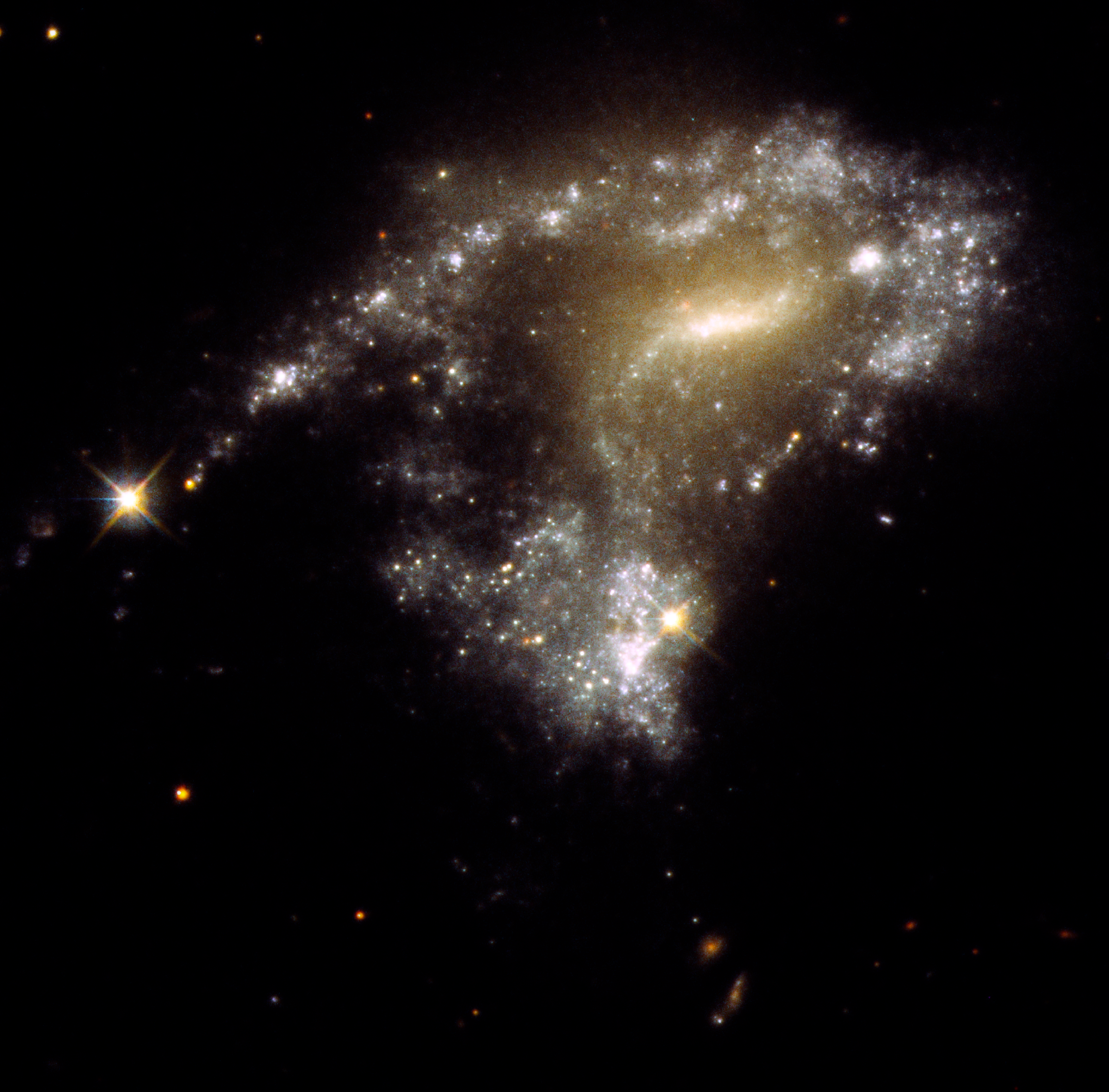
NASA’s Hubble Traces ‘String of Pearls’ Star Clusters in Galaxy Collisions
When galaxies go bump in the night, they cook-up new generations of stars that might otherwise have never been born. These close encounters between galaxies cause a gravitational tug-of-war.
Living on the Edge: Supernova Bubble Expands in New Hubble Time-Lapse Movie
Hubble zoomed in for a close-up look at one sliver of the Cygnus Loop nebula–a huge bubble of glowing gasses. Gossamer filaments resembling wrinkles in a bedsheet stretched across two light-years were found.
Neptune’s Disappearing Clouds Linked to the Solar Cycle
Astronomers have uncovered a link between Neptune’s shifting cloud abundance and the Sun’s 11-year solar cycle that increases the amount of ultraviolet radiation reaching the planet. This discovery is based on three decades of observations by Hubble.
Hubble Unexpectedly Finds Double Quasar in Distant Universe
Hubble has found a rare pair of quasars inside two merging galaxies. These brilliant beacons are powered by supermassive black holes. The galaxies will eventually merge—and so will the quasars. This will result in an even more powerful black hole.
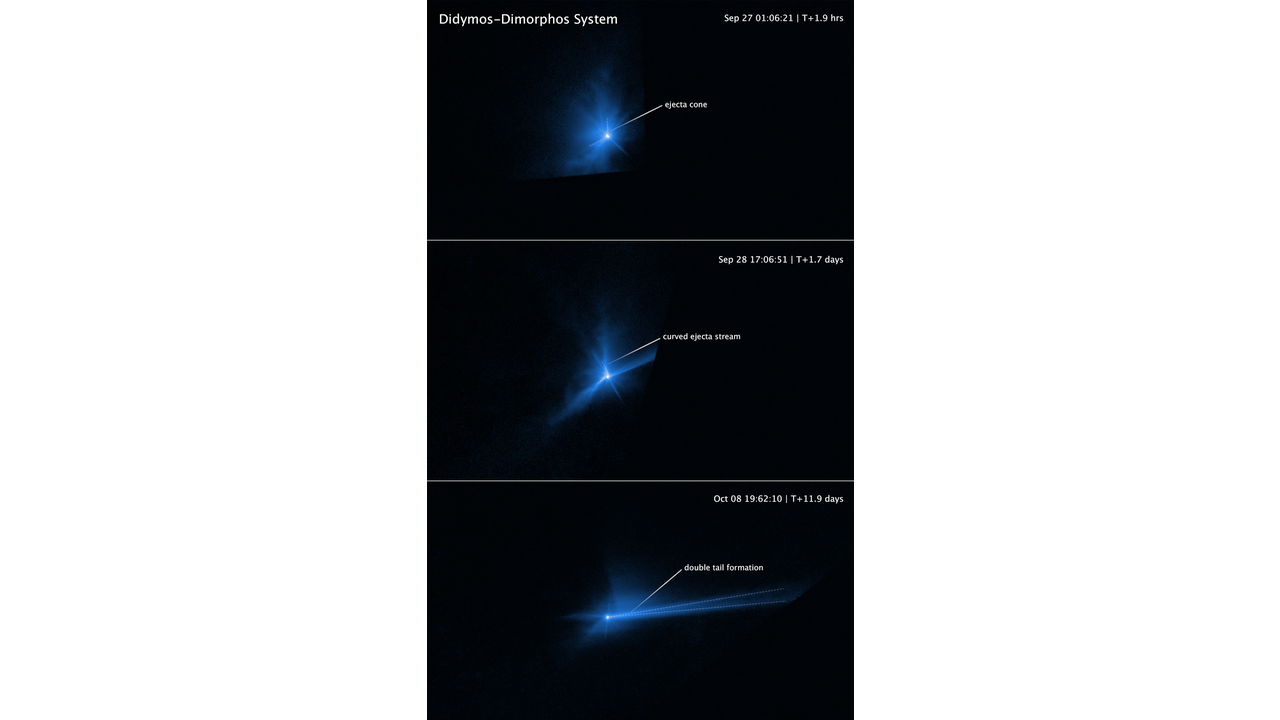
Hubble Captures Movie of DART Asteroid Impact Debris
A time-lapse movie from the Hubble Space Telescope captures the impact of asteroid Dimorphos when it was deliberately hit by NASA’s DART spacecraft on Sept. 26, 2022. The movie shows three overlapping stages of the impact aftermath: the formation of an ejecta cone; the spiral swirl of debris caught up along the asteroid’s orbit about its companion asteroid; and the tail swept behind the asteroid by the pressure of sunlight. Later on, Hubble records the tail splitting in two.
Massive fuel hungry black holes feed off intergalactic gas
Research led by the University of Southampton has revealed how supermassive black holes (SMBHs) are feeding off gas clouds which reach them by travelling hundreds of thousands of light years from one galaxy to another.
HUBBLE FINDS HUNGRY BLACK HOLE TWISTING CAPTURED STAR INTO DONUT SHAPE
Astronomers using Hubble have recorded a star getting swallowed by a giant black hole. Hubble didn’t observe the mayhem directly, but captured spectral fingerprints that provide clues as to how a star gets shredded as it is devoured.
HUBBLE FINDS THAT GHOST LIGHT AMONG GALAXIES STRETCHES FAR BACK IN TIME
These are Hubble Space Telescope images of two massive clusters of galaxies. The artificially added blue color is translated from Hubble data that captured a phenomenon called intracluster light. This extremely faint glow traces a smooth distribution of light from wandering stars scattered across the cluster. Billions of years ago, the stars were shed from their parent galaxies and now drift through intergalactic space alone.
Two Exoplanets May Be Mostly Water, NASA’s Hubble and Spitzer Find
Astronomers have uncovered a pair of planets that are true “water worlds,” unlike any planet found in our solar system. Slightly larger than Earth, they have global oceans at least 500 times deeper than the average depth of Earth’s oceans.
Hubble Captures 3 Faces of Evolving Supernova in Early Universe
Light from a star that exploded over 11 billion years ago was captured by Hubble Space Telescope not just as one postcard from the remote past but three messages that chronicle the fading fireball over a period of one week.

Hubble Detects Protective Shield Defending a Pair of Dwarf Galaxies
Researchers have used Hubble and FUSE observations of ultraviolet light from quasars to detect and map the Magellanic Corona, a diffuse halo of hot, supercharged gas surrounding the Small and Large Magellanic Clouds. Shown in purple, the corona stretches more than 100,000 light-years from the main mass of stars, gas, and dust that make up the Magellanic Clouds, intermingling with the hotter and more extensive Milky Way Corona, shown in blue. The corona is thought to act as a buffer protecting the dwarf galaxies’ vital star-forming gas from the gravitational pull of the much larger Milky Way.
Hubble Reaches New Milestone in Mystery of Universe’s Expansion Rate
Completing a nearly 30-year marathon, NASA’s Hubble Space Telescope has calibrated more than 40 “milepost markers” of space and time to help scientists measure the expansion rate of the universe to a precision of just over 1%. The measurement is about eight times more precise than Hubble’s expected capability.
Hubble Celebrates Halloween With A Glowering, Dying Star
Hubble celebrates Halloween with a striking view of the aging red giant star CW Leonis. The orange-red cobweb-like shells are dusty clouds of sooty carbon engulfing the dying star. Bright searchlight beams poke through the dust.
Hubble Gives Unprecedented, Early View of a Doomed Star’s Destruction
Hubble delivered a ringside seat to a supernova in the very earliest stage of exploding, giving astronomers an unprecedented view of the first moments of a star’s spectacular death.
Hubble Shows Winds in Jupiter’s Great Red Spot Are Speeding Up
The innermost lane may typically be favored to win a race, but in Jupiter’s Great Red Spot, the winds in its outermost “lane” are taking the lead! Only Hubble can spot these trends: The observatory acts like a storm tracker for the giant planets in our solar system every year.
Hubble Snapshot of ‘Molten Ring’ Galaxy Prompts New Research
In this image, a remote galaxy is greatly magnified and distorted by the effects of gravitationally warped space. After its public release, astronomers used the picture to measure the galaxy’s distance of 9.4 billion light-years. This places the galaxy at the peak epoch of star formation in cosmic evolution.
Hubble Finds Early, Massive Galaxies Running on Empty
Fast and furious—that’s how six massive galaxies in the early universe lived before they literally ran out of gas, shut down star formation, and died. These images are composites from Hubble and ALMA.
Rerun of Supernova Blast Is Expected to Appear in 2037
Hubble astronomers are predicting that the fading light from a distant supernova will be rebroadcast in 16 years. This future appearance will be the fourth known view of the same exploded star, dubbed Supernova Requiem.
Hubble Discovers Hydrogen-Burning White Dwarfs Enjoying Slow Aging
Astronomers using Hubble have uncovered burned-out stars that look younger than they really are. After the nuclear furnaces at their cores shut down, the stars continue burning leftover hydrogen on their surface.
Comet ATLAS May Have Been a Blast from the Past
Astronomers who used the Hubble telescope to watch comet ATLAS disintegrate into a cascade of icy fragments in mid-2020, now believe it came from a parent comet that swung by the Sun 5,000 years ago.
Hubble Finds First Evidence of Water Vapor at Jupiter’s Moon Ganymede
Located ½-billion miles from the Sun, the water ice on Ganymede’s surface is frozen solid in frigid temperatures as low as minus 300 degrees Fahrenheit. This makes the ice as hard as rock. Still, a rain of charged particles from the Sun is enough to turn the ice into water vapor at high noon on Ganymede. This is the first time such evidence has been found, courtesy of the Hubble Space Telescope’s spectroscopic observations of aurora on Ganymede spanning two decades. The auroras are used to trace the presence of oxygen, which then is linked to the presence of water molecules sputtering off the surface. Ganymede has a deep ocean located an estimated 100 miles below the surface.
First Images from Rebooted Hubble: Astronomers Peer at Oddball Galaxies
These early snapshots demonstrate Hubble’s return to full science operations, following correction of a computer anomaly aboard the spacecraft. Normal science observations were restarted on July 17, at 1:18 pm EDT.
Mystery of Galaxy’s Missing Dark Matter Deepens
Hubble astronomers say they confirmed that an oddball
galaxy mysteriously lacks dark matter—the glue that holds stars and gas together in galaxies. This confirmation challenges the standard ideas of how researchers think galaxies work.
Lopsided Galaxy NGC 2776
The magnificent spiral galaxy NGC 2276 looks a bit lopsided in this Hubble Space Telescope snapshot. A bright hub of older yellowish stars normally lies directly in the center of most spiral galaxies. But the bulge in NGC 2276 looks offset to the upper left.
Hubble Tracks Down Fast Radio Bursts to Galaxies’ Spiral Arms
Astronomers are on the trail of one of the universe’s most enigmatic events: powerful bursts of radio waves that disappear in the blink of an eye. Using Hubble, they have traced the radio bursts to the spiral arms of distant galaxies.
Hubble Watches How a Giant Planet Grows
Researchers using Hubble directly measured the mass growth rate of PDS 70b for the first time by using the observatory’s unique ultraviolet sensitivities to capture radiation from extremely hot gas falling onto the planet.
Hubble Captures Giant Star on the Edge of Destruction
Hubble is marking its 31st anniversary in orbit with this image of a “celebrity star.” AG Carinae is one of the brightest stars seen in our Milky Way galaxy, encircled by a glowing halo of gas and dust.
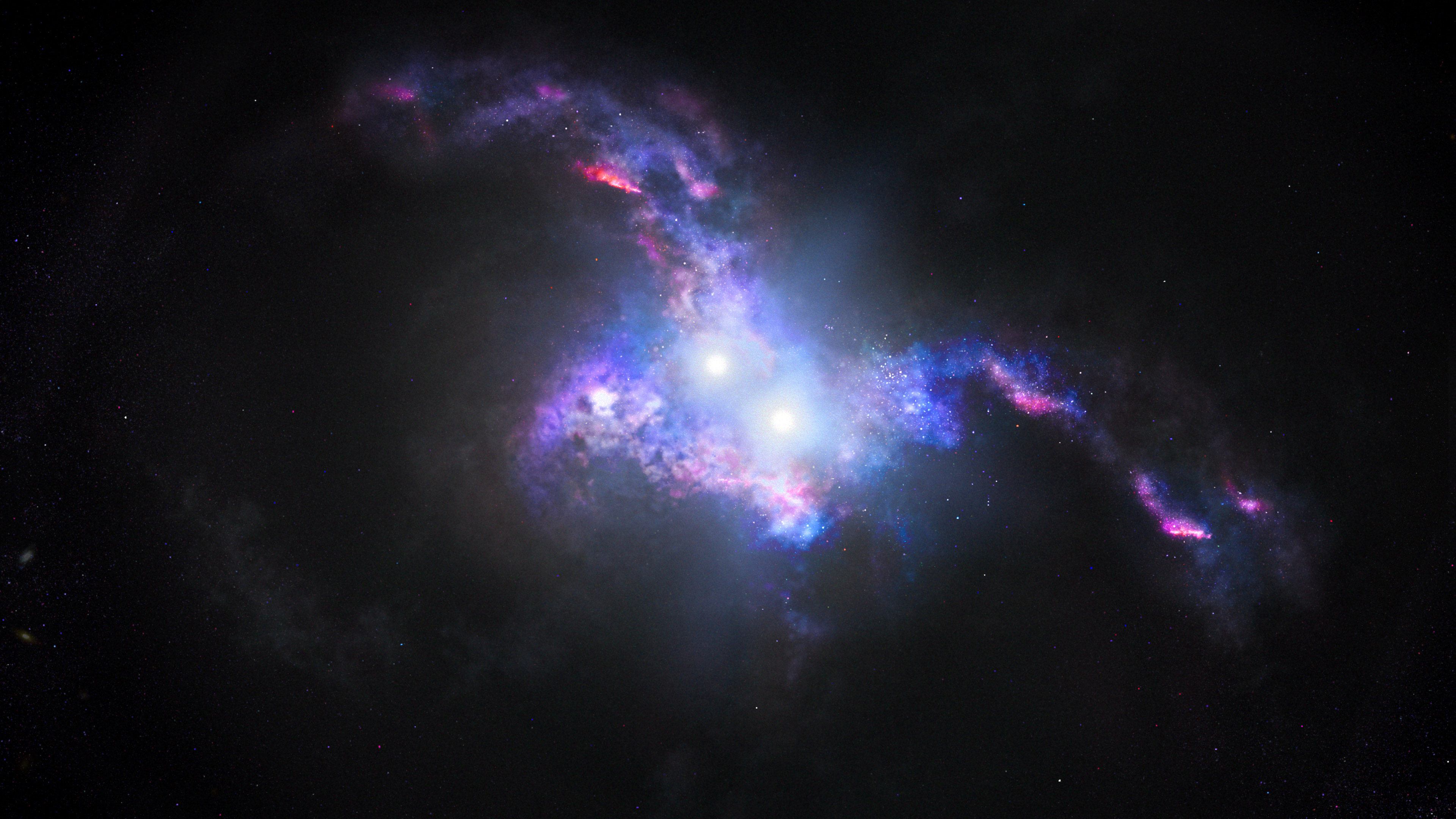
Hubble Spots Double Quasars in Merging Galaxies
Astronomers are “seeing double,” uncovering two close pairs of ancient quasars that reside at the centers of merging galaxies. These brilliant light beacons are powered by supermassive black holes feeding on material, unleashing a torrent of radiation.
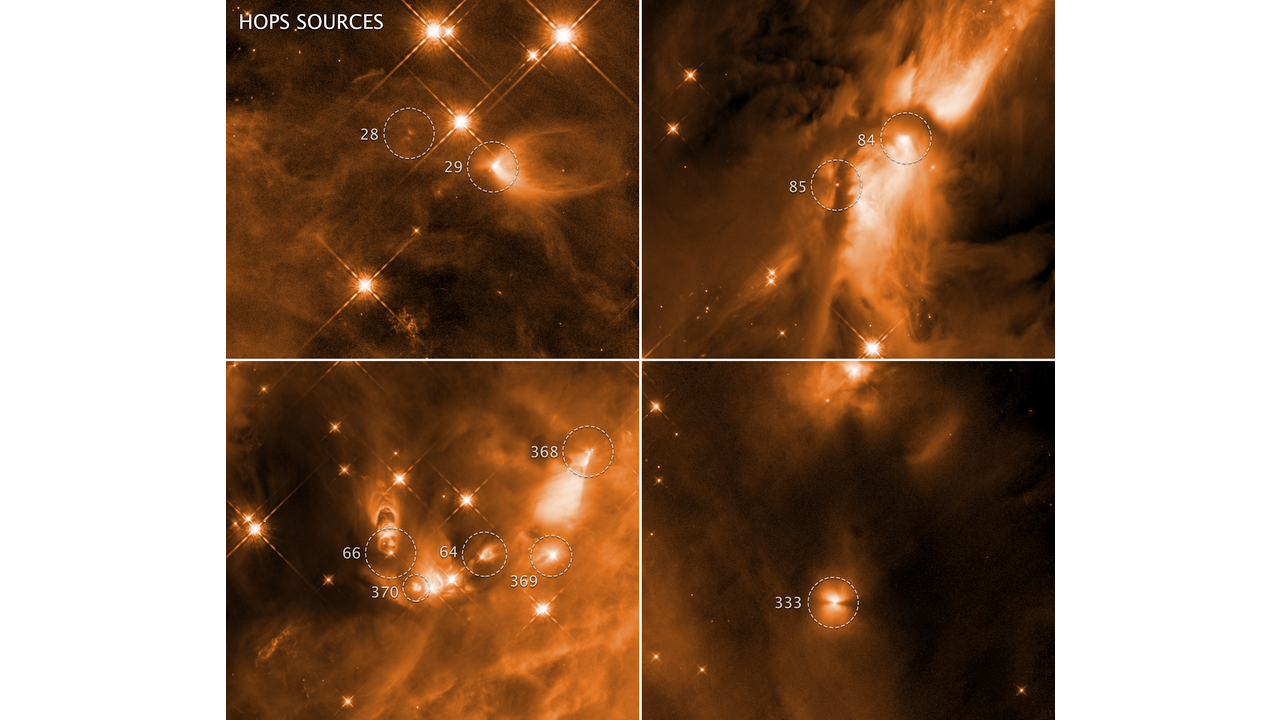
Hubble Shows Torrential Outflows from Infant Stars May Not Stop Them from Growing
These four Hubble images reveal the chaotic birth of stars in the Orion complex, the nearest major star-forming region to Earth. Astronomers found that the cavities in the surrounding gas cloud sculpted by a forming star’s outflow did not grow regularly as they matured, as theories propose.
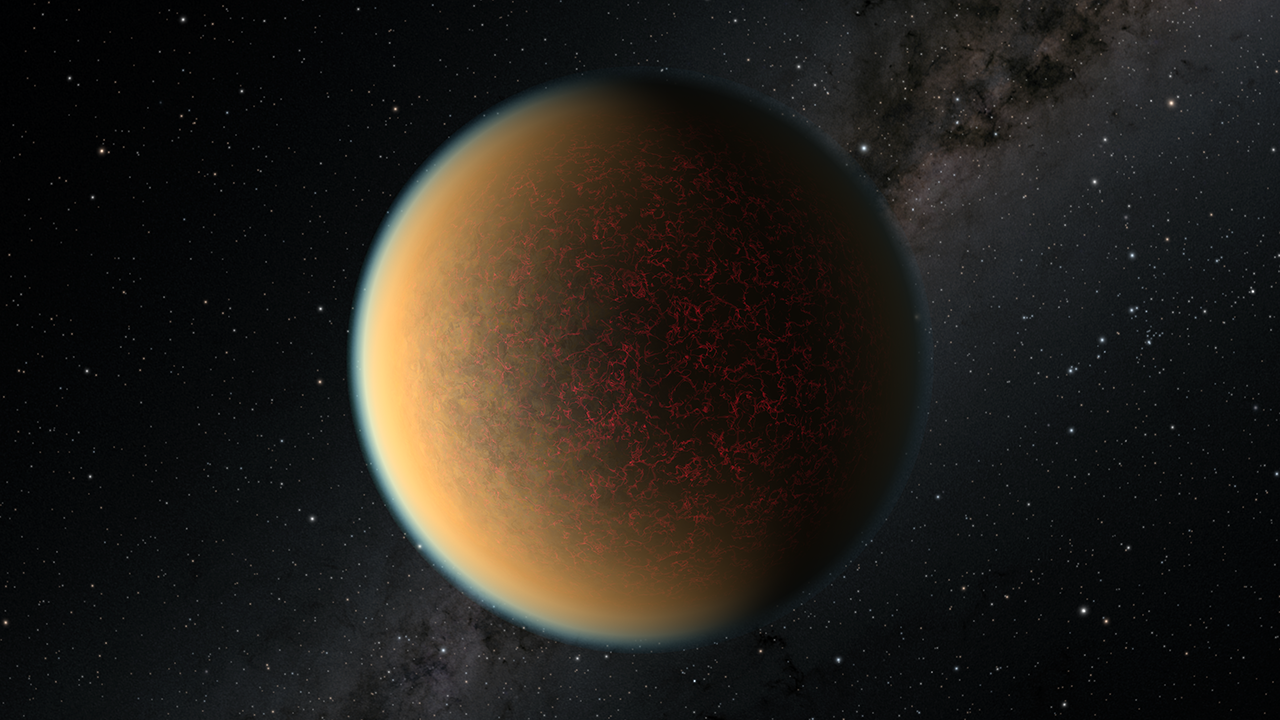
Distant Planet May Be On Its Second Atmosphere, NASA’s Hubble Finds
Scientists using NASA’s Hubble Space Telescope have found evidence that a planet orbiting a distant star may have lost its atmosphere but gained a second one through volcanic activity.
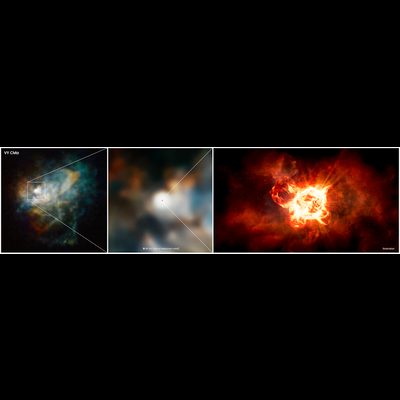
Hubble Solves Mystery of Monster Star’s Dimming
Hubble astronomers are investigating the dimming of one of the most colossal stars ever seen, VY Canis Majoris. Big enough to swallow our solar system out to Saturn’s orbit, the faded star is expelling huge dust clouds late in its life.
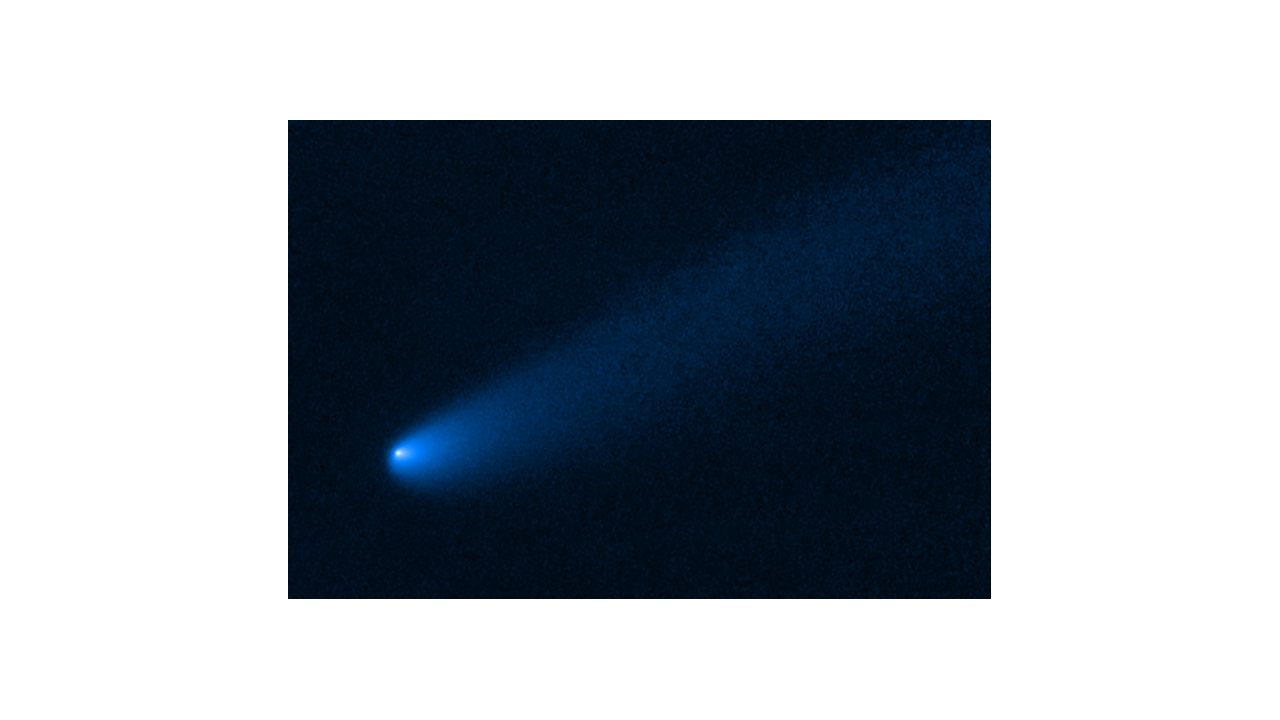
Comet Makes a Pit Stop Near Jupiter’s Asteroids
Hubble snapped this image of the young comet-like object P/2019 LD2 as it orbits near Jupiter’s captured ancient asteroids, which are called Trojans. The icy object is the first comet astronomers have spotted near the Trojan population.
Rutgers Expert Available to Discuss James Webb Space Telescope Science
New Brunswick, N.J. (Feb. 22, 2021) – Rutgers University–New Brunswick Professor Kristen McQuinn is available for interviews on the upcoming launch of the James Webb Space Telescope, its potential scientific impact and the leap forward it will provide in our understanding of the…
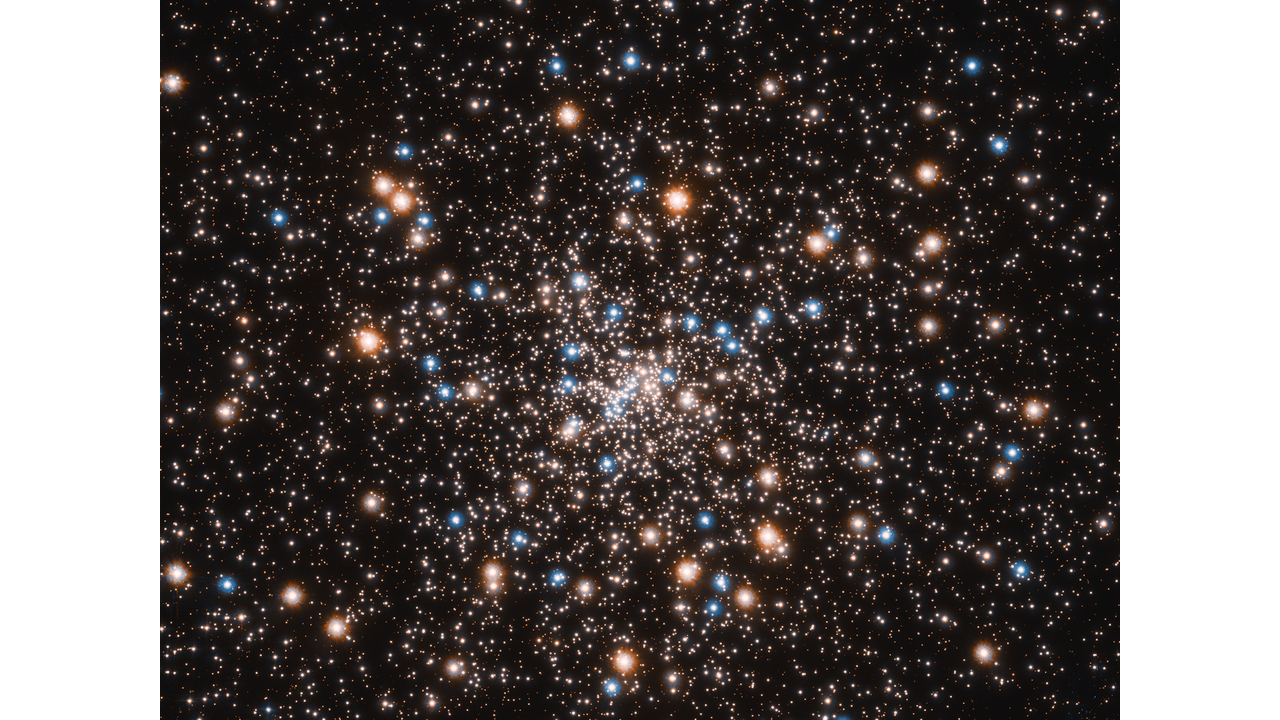
Hubble Uncovers Concentration of Small Black Holes
Astronomers using the Hubble Space Telescope in their hunt for a massive black hole at the heart of the globular cluster NGC 6397 found something they weren’t expecting: a concentration of smaller black holes lurking there instead. This is a new twist on the search for intermediate-mass black holes. They are the long-sought “missing link” between supermassive black holes and stellar-mass black holes.
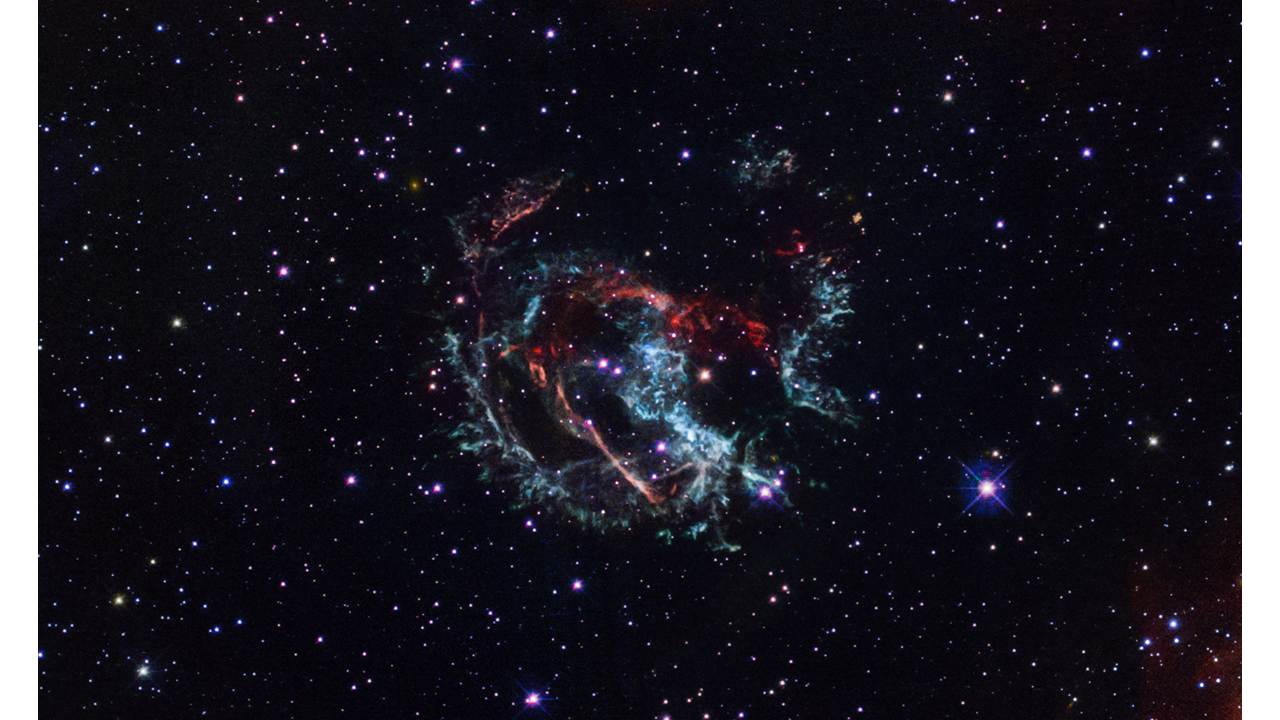
Researchers Rewind the Clock to Calculate Age and Site of Supernova Blast
Hubble astronomers have retraced the expanding gaseous debris from a nearby exploded star to estimate the location and time of the stellar detonation. Their analysis reveals that the light from the supernova blast reached Earth about 1,700 years ago.
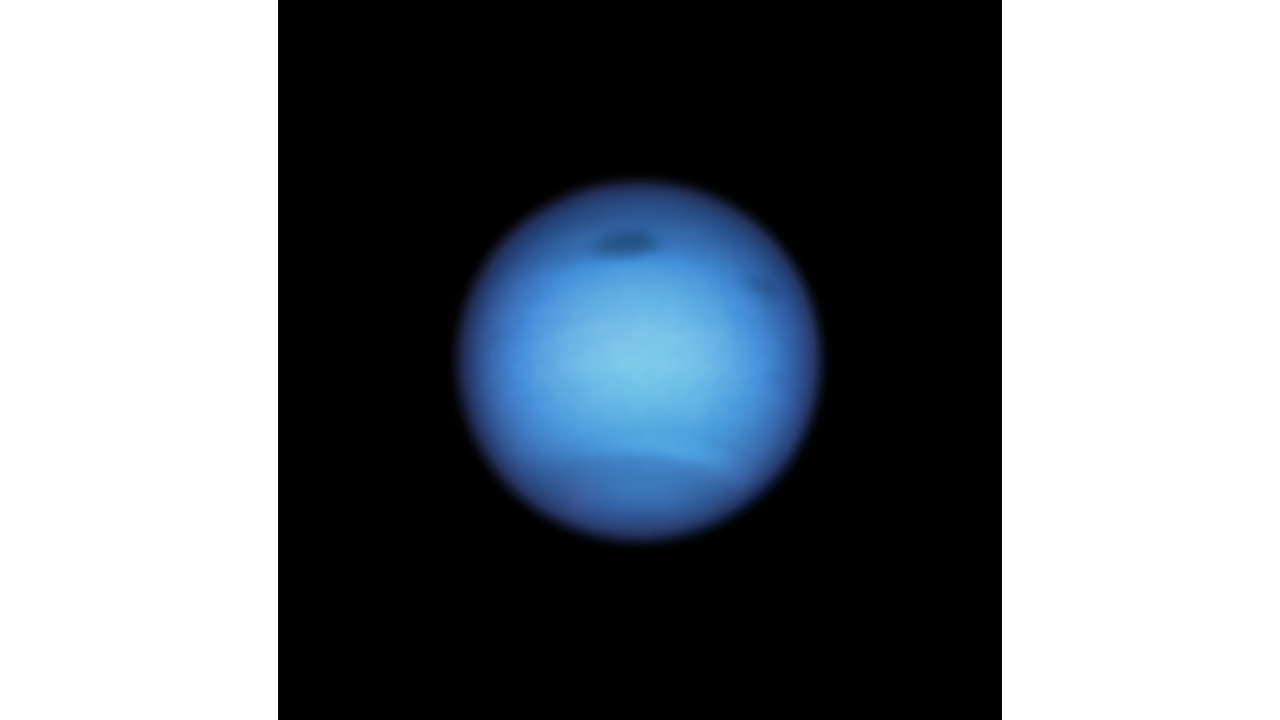
Dark Storm on Neptune Reverses Direction, Possibly Shedding a Fragment
A giant dark storm on Neptune heading for certain doom at the equator mysteriously halted its journey and began drifting in the opposite direction. Almost simultaneously, another smaller dark spot appeared nearby, only to vanish months later. Hubble astronomers are presenting these findings today at the Fall 2020 American Geophysical Union meeting.
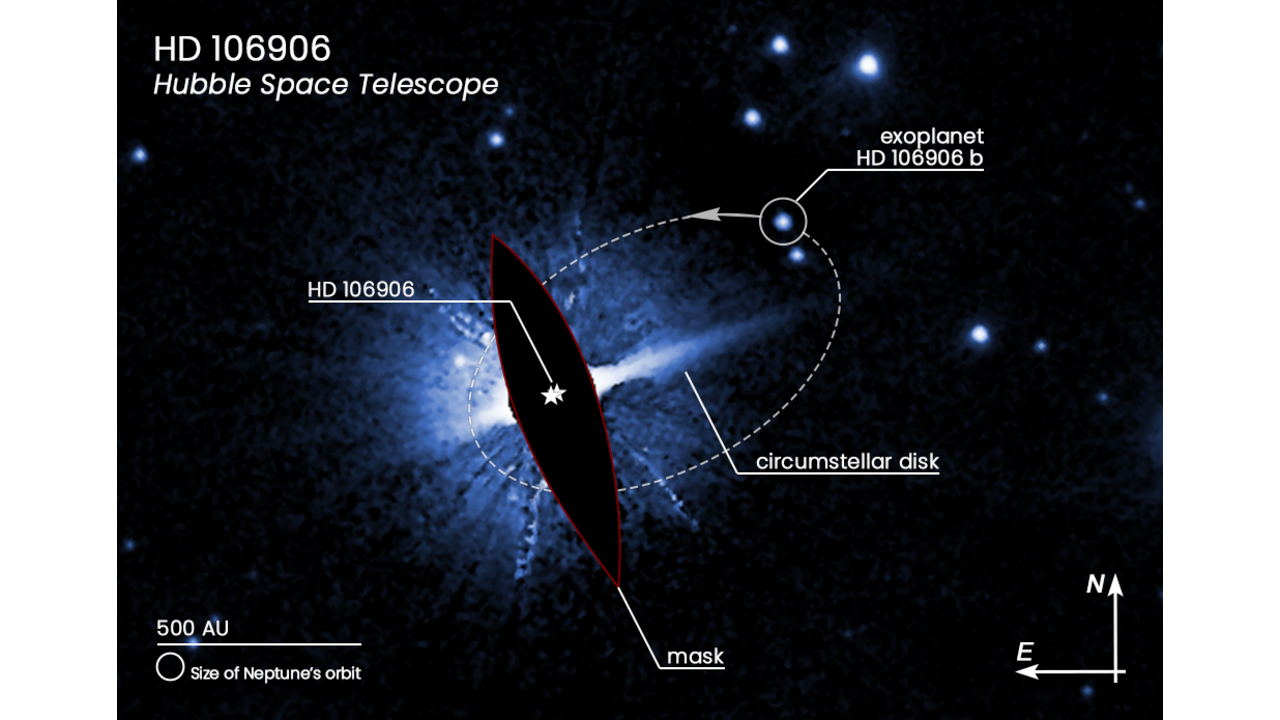
Hubble Pins Down Weird Exoplanet with Far-Flung Orbit
Astronomers analyzing Hubble images of the double star, HD 106906, have discovered a planet in a huge 15,000-year-long orbit that sweeps it as far from its stellar duo as Planet Nine would be from our Sun. This is observational evidence that similarly far-flung worlds may exist around other stars. Researchers hypothesize that the planet wound up there in a game of planetary pinball where the gravitational pull of a passing star modified the orbit’s shape.
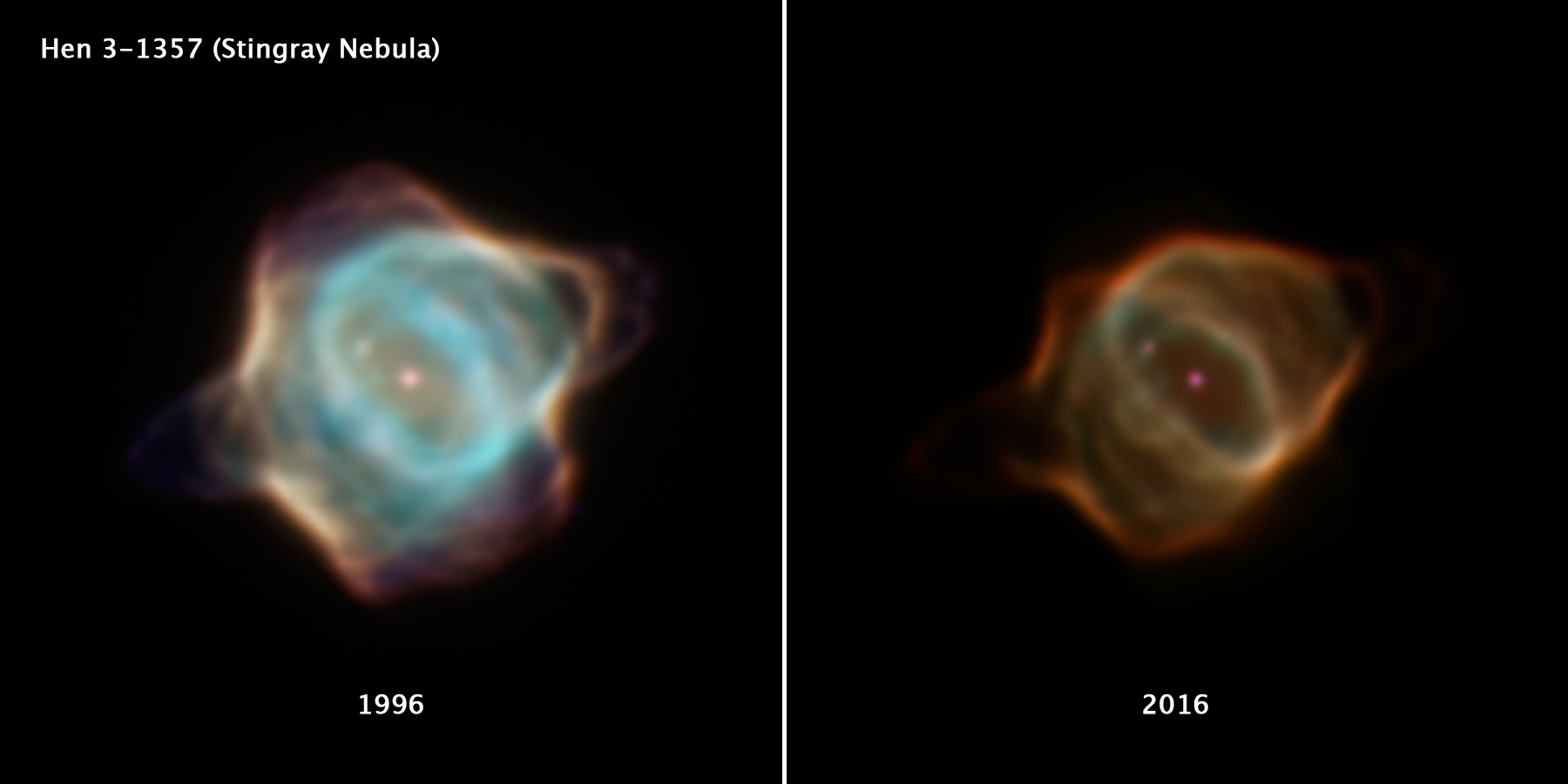
Leaving so soon? Unusual planetary nebula fades mere decades after it arrived
Using images from the Hubble Space Telescope, astronomers have discovered that the Stingray Nebula, the youngest planetary nebula in our sky, has faded dramatically over the course of just 20 years. If dimming continues at current rates, in 20 or 30 years the Stingray Nebula will be barely perceptible.
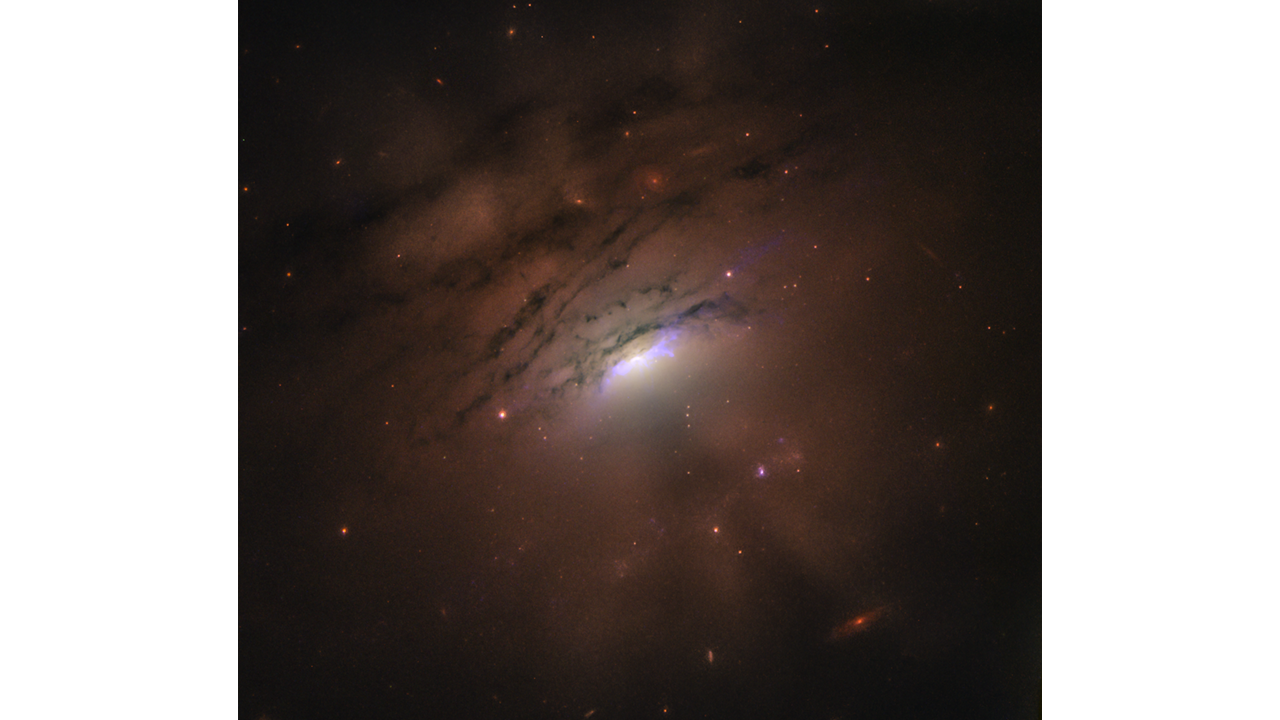
Hubble Catches Possible ‘Shadow Play’ of the Disk Around a Black Hole
This Hubble image of a disk of material feeding a monster black hole in nearby galaxy IC 5063 may be casting its shadow into space. The shadow is interspersed with bright rays that extend across the galaxy. This unique effect offers insight into the structure of the disk.
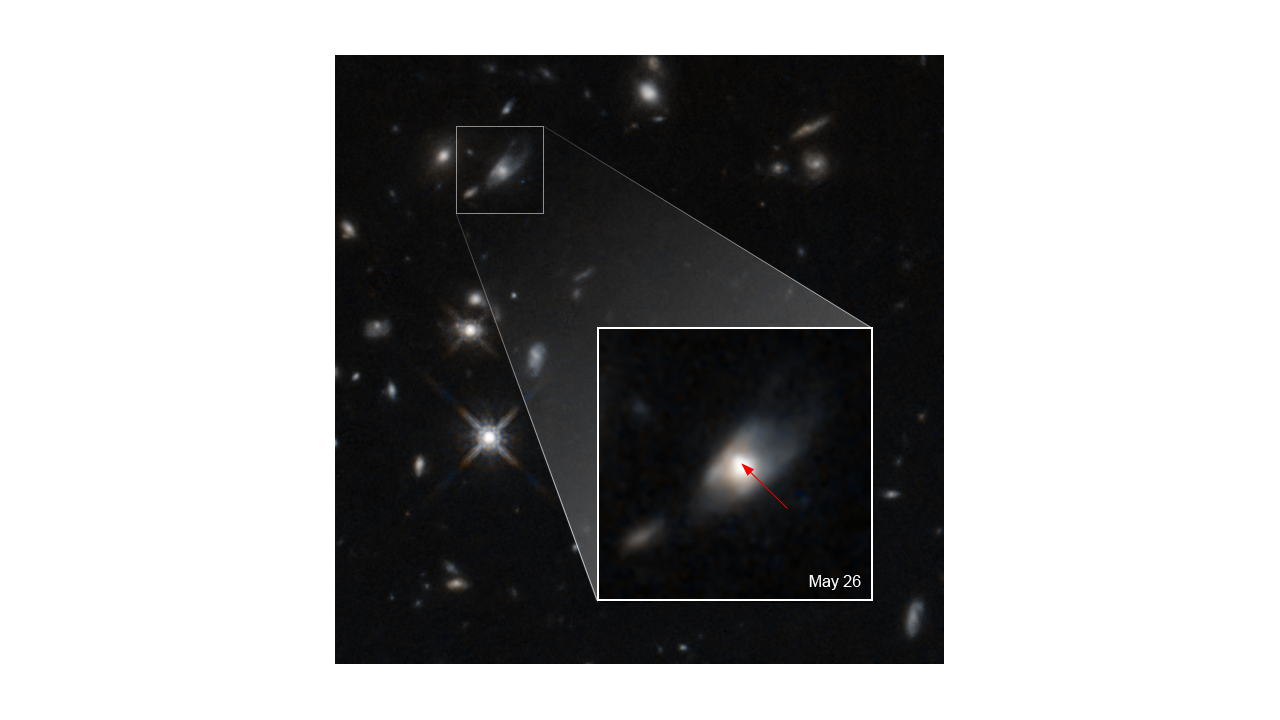
NASA’s Hubble Sees Unexplained Brightness from Colossal Explosion
Following up on an enormous gamma ray burst detected by Swift in May, Hubble astronomers believe they’ve viewed the glow of a kilonova, the aftermath of a colossal explosion caused by the merger of two neutron stars that formed a magnetar. The near-infrared emission seen by Hubble was 10 times brighter than predicted.
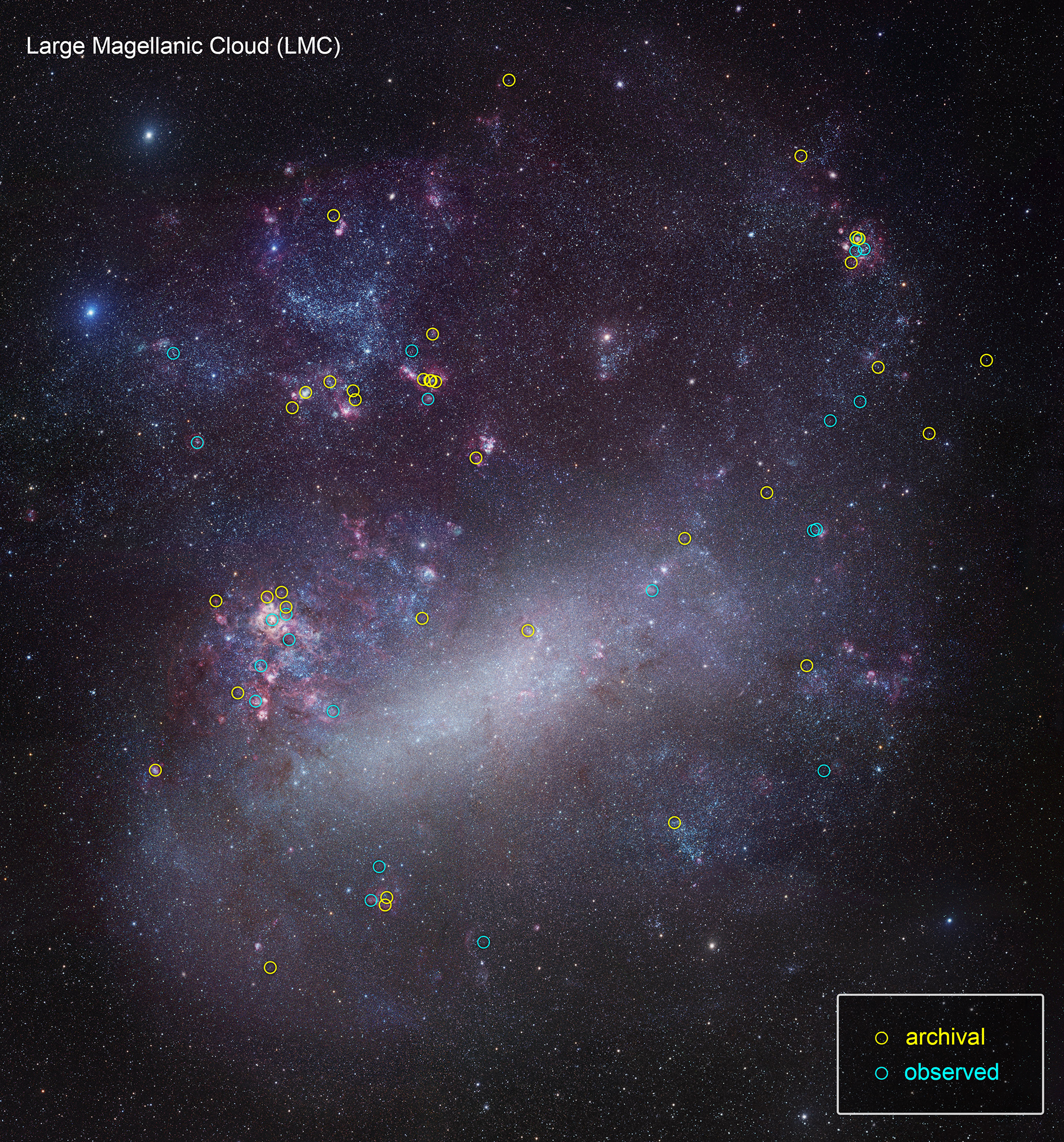
Hubble Launches Large Ultraviolet-Light Survey of Nearby Stars
This is a ground-based telescopic photo of the Large Magellanic Cloud, a satellite galaxy of our Milky Way. The LMC is one of several select targets of a new initiative with NASA’s Hubble Space Telescope, called ULLYSES (UV Legacy Library of Young Stars as Essential Standards). The program is looking at over 300 stars to build an ultraviolet-light catalog for capturing the diversity of stars, from young to old, to give astronomers a much better understanding of the birth of stars and how this relates to everything from planets to the formation and evolution of galaxies.

Hubble Finds “Greater Pumpkin” Galaxy Pair
This new Hubble photo resembling a Halloween carved pumpkin features the early stages of a collision between two galaxies. The “pumpkin’s” glowing “eyes” are the bright, star-filled cores of each galaxy that contain supermassive black holes. An arm of newly forming stars give the imaginary gourd a wry smirk.
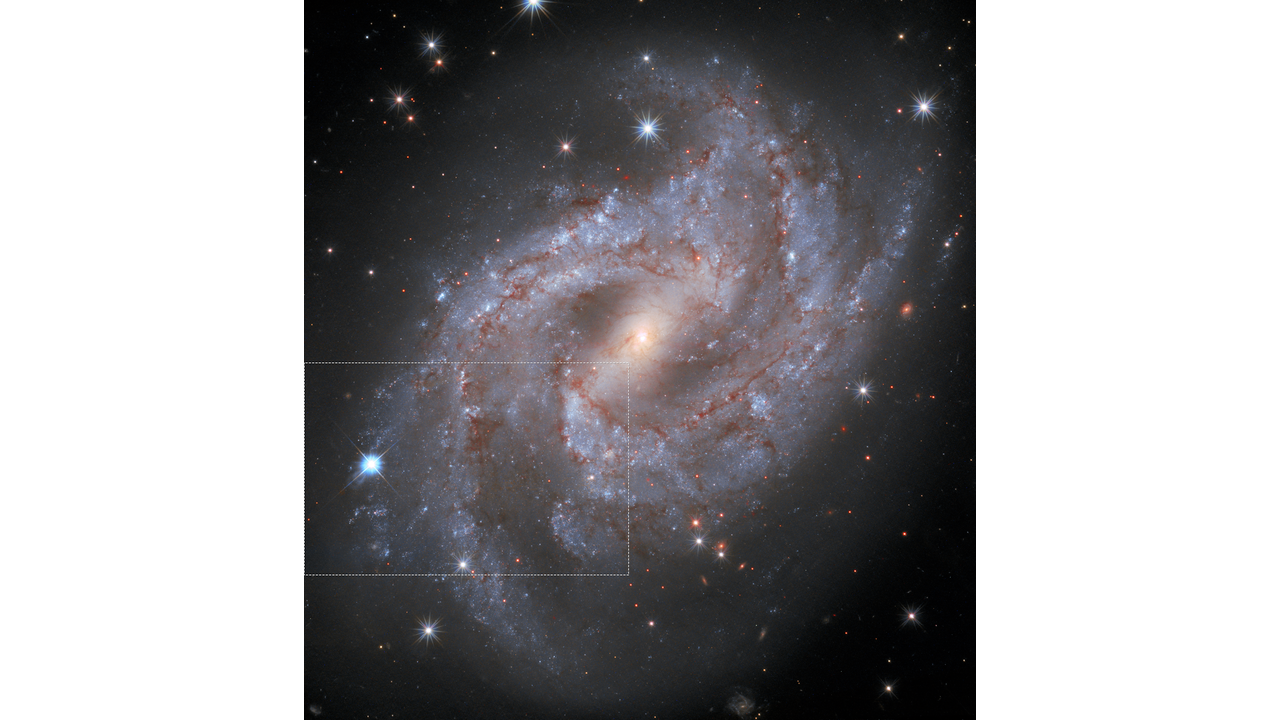
Hubble Watches Exploding Star Fade into Oblivion
Hubble Space Telescope images have been assembled into a time-lapse video of an exploding star fading into oblivion inside a distant galaxy. The video compresses one-year’s worth of observations into seconds. When it exploded the supernova was as bright as 5 billion Suns.